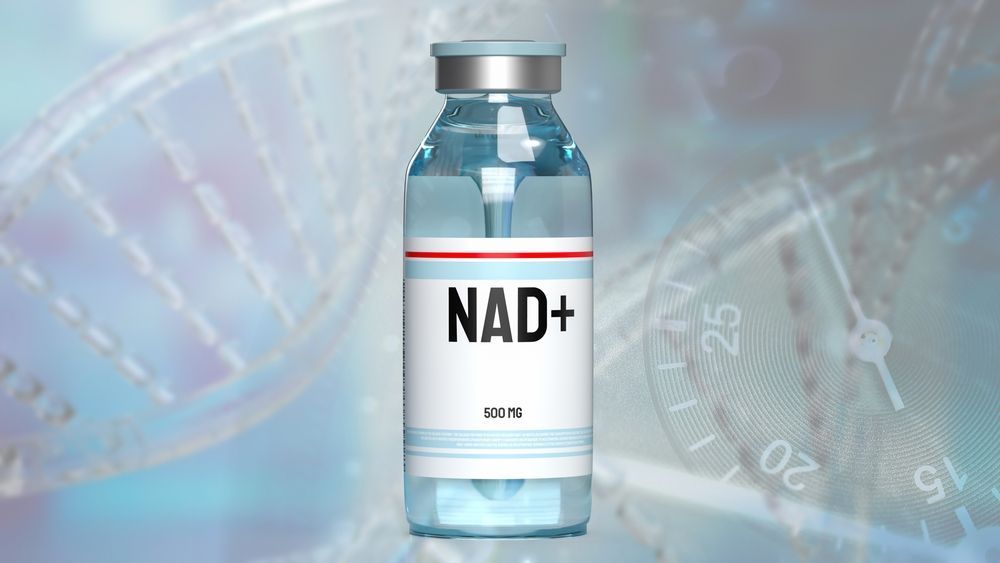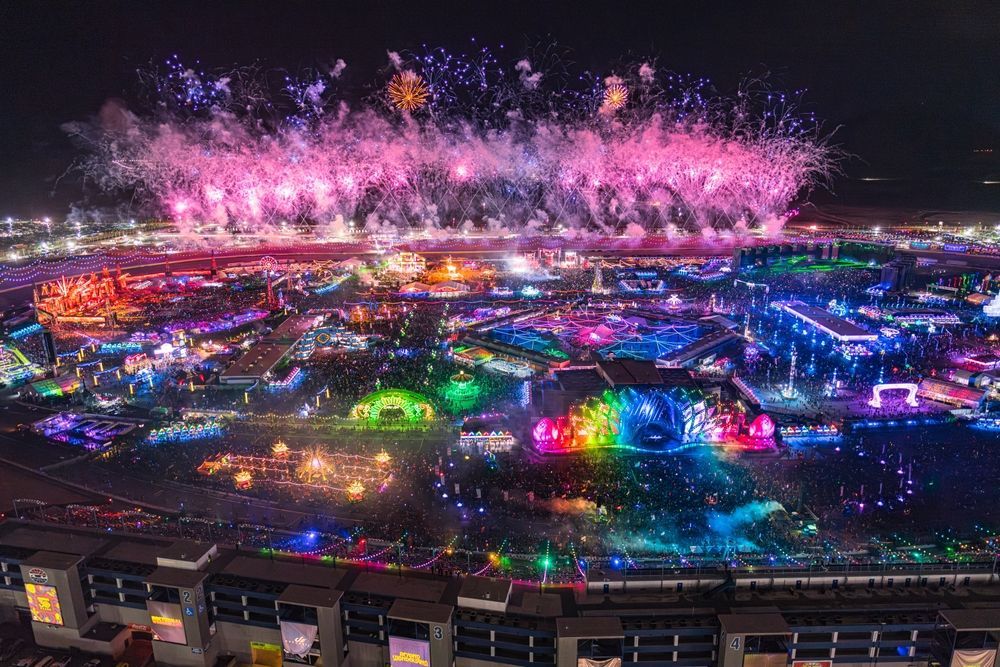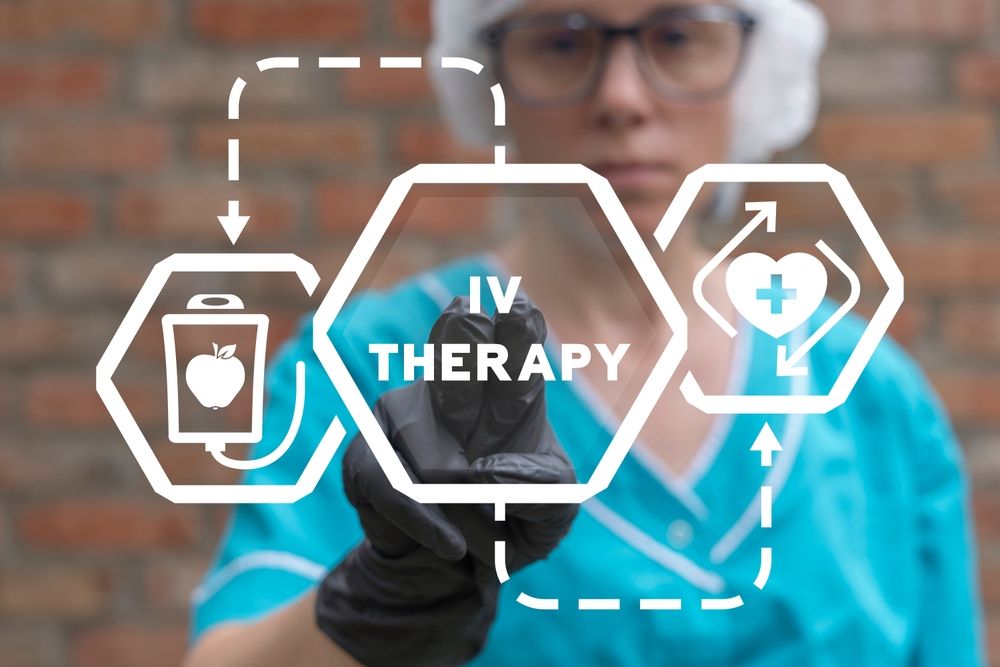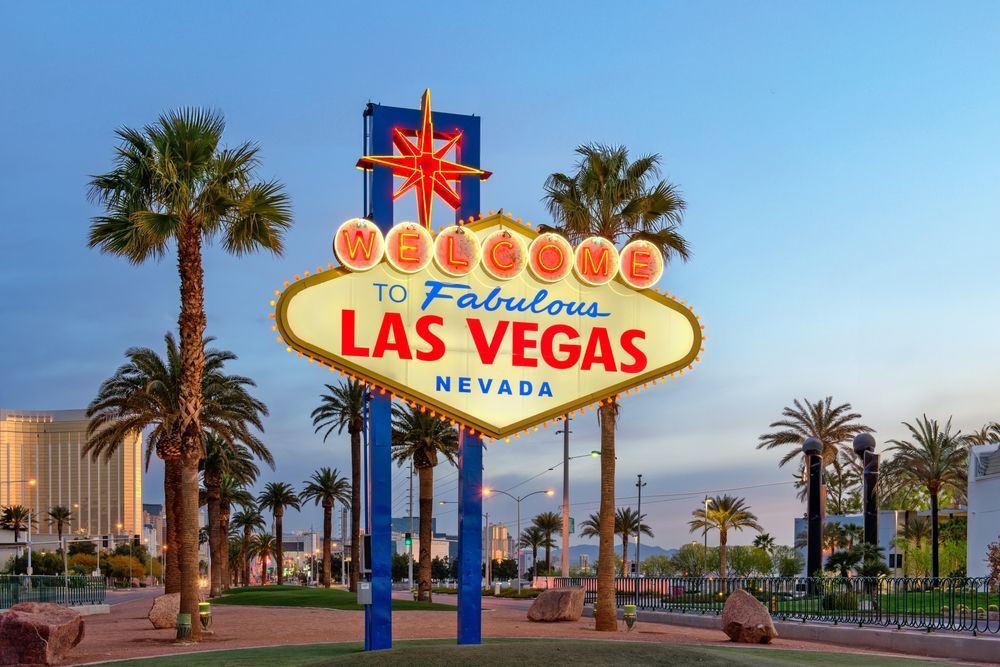By Juan Gonzalez
•
May 12, 2025
Hydration Hacks: Beating the Desert Heat in Las Vegas In the dry, arid climate of Las Vegas , where soaring temperatures and low humidity levels prevail, staying properly hydrated is not merely a matter of comfort but a vital component of maintaining overall health. The harsh desert conditions rapidly deplete the body’s water reserves, causing a cascade of issues ranging from mild fatigue and mood changes to severe dehydration symptoms that can impact cellular function, nutrient absorption, and even cognitive performance. Mobile IV therapy , such as that provided by Hangover IV Las Vegas, addresses these challenges directly by delivering fluids, electrolytes, vitamins, and amino acids directly into the bloodstream for rapid rehydration and recovery. Whether combating a hangover, recovering from strenuous outdoor activities, or simply enduring the brutal desert heat, understanding and employing effective hydration hacks is essential for energy, endurance, and overall wellness. This article examines practical hydration strategies tailored specifically for the harsh desert environment of Las Vegas. By dissecting signs of dehydration, exploring the impacts on body performance, and comparing natural hydration techniques with advanced clinical support methods like IV fluids , readers will gain comprehensive insights into maintaining optimal hydration. Additionally, the article delves into the critical role of electrolytes and provides actionable tips for planning hydration before, during, and after exposure to intense heat. With robust scientific evidence, detailed lists, tables summarizing key hydration methods , and practical takeaways, the following sections offer a step-by-step guide to preventing dehydration and ensuring sustained energy and cognitive function in the extreme desert climate. Transitioning now into detailed strategies, the first section explains why hydration is of paramount importance in desert climates and how dehydration signals, performance impacts, and electrolyte imbalances manifest in such environments. Understanding the Importance of Hydration in Desert Climates In desert climates like Las Vegas, maintaining hydration is critical to counteract the rapid loss of fluids due to intense heat and arid air. The first sign of dehydration can quickly escalate to impaired physical and cognitive functions if not addressed immediately. Recognizing the warning signals of dehydration is essential because even minor water deficits can lead to complications such as reduced blood volume, impaired nutrient transport, and inefficient body cooling mechanisms. Recognizing Dehydration Signals Under Intense Heat The body signals dehydration through several recognizable symptoms. Initially, individuals may experience dry mouth, dizziness, and fatigue. As dehydration worsens, indicators like dark urine, headache, and confusion intensify. Maintaining vigilance about these early warning signs can prevent progression to more serious conditions like heat exhaustion or heatstroke. Research has shown that even a 2% loss in body water can negatively affect cognitive performance and physical endurance, making early detection vital for timely intervention. For individuals in desert climates, regularly monitoring urine color and self-awareness of energy levels are practical measures to track hydration status. Additionally, experts note that subtle changes in skin elasticity and a distinct feeling of thirst are among the most reliable early indicators of dehydration, suggesting immediate action to rehydrate. Impacts of Dehydration on Body Performance Dehydration significantly impairs bodily functions. A deficit in fluids not only reduces blood circulation but also affects muscle performance, cognitive clarity, and the body's ability to regulate temperature. Scientific studies have found that dehydration can decrease endurance, impair concentration, and even alter mood due to hormonal shifts, such as increased cortisol levels. In high-temperature environments, the risks are magnified because the body loses water quickly through sweating, impacting both metabolic and cellular functions. For example, athletes who fail to hydrate properly often experience a decline in performance by as much as 15-20% due to decreased muscle efficiency—evidence that is equally applicable to everyday tasks in the desert heat. Moreover, the drop in blood volume can affect the delivery of essential nutrients and oxygen to cells, leading to increased muscle fatigue, difficulty in maintaining steady physical performances, and even longer recovery times following minor injuries. How Desert Conditions Affect Electrolyte Balance In the desert, excessive sweating not only results in water loss but also depletes important electrolytes such as sodium, potassium, magnesium, and calcium. Electrolytes are essential for nerve conduction, muscle contraction, and maintaining fluid balance within cells. When electrolyte levels fall, individuals may experience symptoms such as muscle cramps, irritability, and abnormal heart rhythms. Scientific research has indicated that even slight imbalances in electrolytes can disrupt cellular processes and reduce overall performance. For instance, athletes have documented improved performance and reduced cramping by incorporating electrolyte-rich supplements during prolonged activity in hot environments. Additionally, the desert heat accelerates the depletion of these vital minerals , making it critical for residents and visitors of Las Vegas to choose beverages and supplements that support electrolyte replenishment. Foods rich in electrolytes combined with proper hydration strategies can prevent imbalances and sustain physical and cognitive functions. Key Takeaways: - Early dehydration signs include dry mouth, fatigue, and darker urine. - Dehydration lowers blood volume, reducing physical and cognitive performance. - Rapid fluid loss from sweating leads to significant electrolyte imbalances. Mastering Hydration Strategies for Las Vegas Heat Given the unique challenges of the Las Vegas desert climate, individuals must master hydration strategies that go beyond simple water consumption. Effective hydration in extreme heat involves not only replenishing fluids but also maintaining a balance of essential electrolytes. With the rising popularity of Mobile IV therapy and advanced rehydration techniques, residents and visitors alike can adopt both natural and clinical approaches to combat dehydration. Setting a Hydration Schedule for Extreme Temperatures Establishing a hydration schedule is an essential strategy to ensure that the body is consistently replenished throughout the day. Experts recommend drinking fluids at regular intervals rather than waiting until significant thirst develops, as thirst is often a late signal of dehydration. A structured schedule might include hydration upon waking, periodic water breaks during intense activities, and an extra focus on fluid intake before outdoor excursions. In Las Vegas, with its intense midday heat, setting reminders or using hydration apps can be particularly useful. Research indicates that regular water intake can prevent the sharp spikes in body temperature that lead to physical and mental fatigue. Furthermore, planning hydration before, during, and after any exposure to the desert environment is key to sustaining physical endurance and mental clarity over extended periods. For those at risk of dehydration—such as athletes, outdoor workers, and festival-goers—a scheduled hydration plan can mitigate the adverse effects of heat stress and ensure optimal performance. Choosing Nutrient-Rich Fluids in the Desert In addition to water, selecting nutrient-rich fluids is equally important to deliver both hydration and essential electrolytes. For instance, beverages fortified with sodium, potassium, and magnesium are known to enhance absorption rates and help maintain electrolyte balance. Natural options like coconut water, which contains a balanced mix of electrolytes, or prepared rehydration solutions that include glucose and salt, can be more effective than plain water alone. Incorporating herbal teas or diluted fruit juices can also provide vitamins and minerals necessary for regulating body temperature and cellular metabolism. Scientific studies have shown that nutrient-rich fluids can improve rehydration efficiency by up to 30% compared to water alone by promoting faster absorption and better cellular uptake. These fluids not only boost hydration levels but also support recovery, particularly after prolonged exposure to heat, where the body requires a quick restore of both fluids and essential nutrients. This approach is beneficial not only for combating dehydration but also for sustaining overall metabolic functions throughout the day. Integrating Water and Electrolyte Intake Techniques Successful hydration in extreme heat combines water intake with targeted electrolyte supplementation. Various techniques have emerged, such as consuming electrolyte tablets dissolved in water, using sports drinks formulated for high-heat environments, and even integrating salt supplements into meals. In clinical settings like Mobile IV therapy , a well-curated blend of water, electrolytes, vitamins, and amino acids is administered directly into the bloodstream, ensuring rapid rehydration and recovery. This method has been supported by multiple peer-reviewed studies—for instance, a study by Casa et al. (2010) demonstrated that athletes who received electrolyte-enhanced fluids maintained better cognitive and physical performance than those who only drank water. In natural settings, including a combination of hydrating foods like fruits and vegetables, along with consistent water and electrolyte intake, can provide comprehensive and long-lasting hydration. For individuals who are active in the desert, alternating between water and electrolyte beverages throughout the day can prevent sudden drops in performance and support sustained energy levels, especially during high-energy activities. This method of integrated hydration ensures that the body receives not only the necessary fluids but also the compounds required to optimize cellular functions, prevent cramping, and enhance overall endurance in the rigorous desert environment. Key Takeaways: - A structured hydration schedule helps prevent severe dehydration. - Nutrient-rich fluids provide both hydration and essential electrolytes. - Combining water with electrolyte supplementation is vital for maintaining energy and performance in extreme heat. Embracing IV Fluids as a Rapid Hydration Method In situations where dehydration is severe or when rapid rehydration is necessary, IV fluids have emerged as an effective solution to restore hydration quickly. This acute intervention is particularly valuable in the desert, where water loss can be both rapid and impairing. IV hydration offers a clinical approach by bypassing the gastrointestinal tract and delivering fluids directly into the bloodstream, resulting in immediate benefits that can support energy levels, cognitive functions, and physical recovery. How IV Fluids Quickly Restore Body Hydration IV fluids work by directly infusing water along with a balanced mix of electrolytes and vitamins into the body, effectively bypassing the slower process of digestion and absorption. The immediacy of this method is particularly beneficial in extreme conditions such as those in Las Vegas, where dehydration can lead to quick declines in performance and cognitive clarity. Clinical trials and peer-reviewed studies have demonstrated that IV hydration can restore bodily functions more rapidly than oral rehydration methods; one study published in the Journal of Emergency Medicine (2018) showed that patients receiving IV fluids recovered hydration markers nearly 40% faster than those only drinking fluids. IV therapy provides a tailored approach to hydration by allowing precise adjustments in fluid composition based on individual needs, ensuring that both water and vital electrolytes like sodium, potassium, and magnesium are replenished in the right proportions to stabilize blood volume and enhance cellular function. Selecting IV Therapy Options Tailored for Desert Climates When considering IV therapy in a desert environment, factors such as the specific blend of nutrients, vitamins, and electrolytes become critical. Options often include combinations known to support rapid recovery and long-term hydration, such as saline with added vitamins (vitamin C, B vitamins), amino acids, and antioxidants. Therapy providers, like Hangover IV Las Vegas, design their protocols to suit the high demands of desert climates where the risk of dehydration-related complications is significant. These protocols are based on both extensive clinical research and practical outcomes from patients who experience the unique challenges of extreme heat and low humidity. The selection process involves assessing individual conditions—such as recent physical exertion, overall health, and existing nutrient deficiencies—to customize the IV cocktail. This consideration ensures that each patient receives the appropriate dose to accelerate recovery without overwhelming the system. By choosing an IV therapy option designed specifically for desert conditions, patients can quickly restore their hydration levels and improve their functional performance, reducing the risk of heat-related illnesses and supporting overall wellness. Monitoring Recovery With IV Hydration Monitoring recovery post IV therapy involves tracking several clinical indicators, including improvements in blood pressure, pulse rate, and hydration status as measured by lab tests. Medical professionals observe these parameters to ensure that the therapy has effectively restored fluid balance and that electrolyte levels have normalized. Follow-up checkups can include measuring urine output, electrolyte panels, and patient-reported metrics such as energy levels and cognitive clarity. Studies have suggested that structured follow-up protocols can improve the outcomes of IV therapy by ensuring sustained hydration and identifying any gaps in recovery early on. Furthermore, feedback from patients in high-stress environments like the Las Vegas desert has informed best practices in IV hydration, emphasizing the importance of a tailored recovery plan that includes both clinical and natural rehydration methods. This dual approach not only optimizes the short-term benefits of IV fluids but also supports long-term hydration strategies by guiding patients on how to balance subsequent water and electrolyte intake after therapy. As a result, continuous monitoring, along with patient education on hydration maintenance, forms a cornerstone of effective rapid rehydration protocols in extreme environments. Key Takeaways: - IV fluids rapidly deliver essential hydration by bypassing the digestive system. - Tailored IV therapy options are crucial for addressing the specific needs of desert climates. - Monitoring recovery post-IV therapy ensures sustained hydration and balanced electrolytes. Boosting Electrolytes for Sustained Energy and Wellness In the harsh desert environment of Las Vegas, where fluids are rapidly lost due to high temperatures and heavy physical activity, maintaining electrolyte levels is essential to preserve cellular function and overall energy. Electrolytes such as sodium, potassium, magnesium, and calcium work synergistically to regulate nerve impulses, muscle contractions, and hydration status. A deficit in these minerals can lead to muscle cramps, diminished endurance, and impaired cognitive performance. Boosting electrolyte levels through both dietary sources and clinical interventions provides a sustainable way to maintain physical and mental wellness, ensuring that the body remains resilient even in extreme conditions. Foods and Drinks That Naturally Enhance Electrolyte Levels Boosting electrolytes naturally can be achieved through a balanced diet and by choosing specific beverages known for their high electrolyte content. Foods like bananas and avocados provide potassium, while dairy products and leafy greens are rich in calcium and magnesium. In addition, sports drinks and coconut water offer a convenient blend of sodium, potassium, and other essential minerals to support hydration during vigorous activity. For instance, a comprehensive study by Maughan and Shirreffs (2010) reported that consuming electrolyte-rich drinks during prolonged exercise significantly enhanced performance compared to water alone, improving endurance, and reducing muscle fatigue. Natural sources are particularly beneficial as they not only replenish vital electrolytes but also supply additional nutrients such as vitamins and antioxidants that promote overall health. Including a variety of these foods and drinks in one’s diet creates a robust defense against the electrolyte depletion common in high-heat environments. Combining Dietary Methods With IV Support While dietary intake plays a crucial role in boosting electrolytes, combining these methods with IV support can provide immediate relief and faster restoration of electrolyte balance, particularly in severe dehydration scenarios. Clinical IV therapy can be customized with a blend of saline solutions, vitamins (such as vitamin B6 and vitamin C), and amino acids alongside electrolytes. This combination facilitates rapid absorption and offers symptomatic relief for issues like muscle cramps, headaches, and fatigue. Integrating nutritional foods with scheduled IV treatments ensures that the body receives both immediate and sustained support. For example, a patient may receive an IV infusion to quickly replenish depleted electrolytes followed by a meal rich in nutrient-dense foods to maintain these levels over time. This dual strategy aligns with best practices recommended by sports nutrition experts and medical guidelines, helping to mitigate the adverse effects of electrolyte imbalances while supporting long-term energy and wellness in challenging environments. Expert Tips for Maintaining Electrolyte Balance in Heat Healthcare professionals emphasize several key practices for maintaining electrolyte balance during extreme heat. First, it is essential to drink electrolyte-enhanced fluids consistently throughout the day rather than relying on water alone. Second, incorporating a mix of solid foods—rich in minerals and vitamins—can support prolonged electrolyte balance. Third, monitoring physical symptoms such as muscle cramps, fatigue, and dizziness provides early cues for intervention before an electrolyte imbalance becomes critical. For individuals engaged in outdoor activities, using electrolyte tablets or capsules can be a convenient way to boost levels when access to balanced meals is limited. Moreover, experts advise that hydration strategies be personalized according to activity level, body weight, and environmental factors, ensuring that supplementation is neither insufficient nor excessive. Following these recommendations helps maintain not only physical endurance but also contributes to better mental performance, as stable electrolyte levels have been linked to improved cognitive function. By integrating both natural dietary methods and precise clinical support like IV therapy, individuals facing the rigors of desert heat can achieve a balanced state of hydration and energy. Key Takeaways: - Natural foods and beverages can significantly boost essential electrolytes. - Combining dietary methods with IV support offers both immediate and sustained benefits. - Expert strategies prioritize regular intake of electrolyte-enhanced fluids and periodic monitoring of symptoms. Preventing Desert Dehydration During Las Vegas Adventures Las Vegas is not only known for its vibrant nightlife and entertainment but also for its extreme desert conditions that pose a constant risk of dehydration. Whether exploring the urban streets of downtown Las Vegas or venturing into the outdoor recreational areas surrounding the city, preventing dehydration is critical to maintaining health and maximizing enjoyment. A proactive approach to hydration begins well before setting out on a journey, incorporating strategic planning and practical on-the-go techniques designed to counteract the intense heat and arid conditions. Pre-Trip Hydration Planning for Visitors Before embarking on any adventure in Las Vegas, effective hydration planning is essential. Visitors are encouraged to hydrate well in advance, ensuring that their bodies start with optimal fluid levels. This pre-trip hydration strategy may involve drinking electrolyte-infused beverages the night before and in the early morning hours. Preparing a hydration kit that includes water bottles, electrolyte tablets, and nutrient-dense snacks can greatly help. Volume-based hydration guidelines suggest that an average adult should consume approximately 3.7 liters of fluids per day in hot conditions, with adjustments based on physical activity and individual need. Travelers should research local conditions, plan rest stops, and seek shade during peak sunlight hours. Additionally, utilizing tracking apps to monitor fluid intake can help maintain consistency and alert users when it is time to rehydrate. This preemptive approach minimizes the risk of dehydration before any symptoms become evident and lays the foundation for a safe, enjoyable desert experience. On-the-Go Techniques for Urban and Outdoor Settings While exploring Las Vegas, whether in urban areas like the Las Vegas Strip or outdoor recreational areas, maintaining hydration is a constant necessity. On-the-go hydration techniques include carrying a reusable water bottle and refilling it frequently at designated hydration stations commonly found in parks, casinos, and tourist attractions. For those engaged in outdoor activities such as hiking or sightseeing, portable electrolyte supplements, like tablets or powders, can be quickly added to water to boost fluid retention and energy levels. Another effective strategy is to set frequent breaks during extended periods of activity to drink water and re-assess hydration levels. Engaging in mindful hydration practices, such as tracking and scheduling water intake intervals, is especially critical when the ambient temperature exceeds 100°F. Additionally, mobile technologies and hydration apps can provide timely reminders, turning hydration into a manageable and essential part of the adventure rather than an afterthought. Utilizing Hydration Hacks During High-Energy Activities During high-energy activities in the desert, such as walking tours, outdoor events, or athletic pursuits, it is vital to implement hydration hacks that enhance fluid absorption and electrolyte replenishment. One effective hack is the alternation between water and electrolyte beverages to prevent the over-dilution of electrolytes. Another practical tip is to consume small, frequent sips instead of large gulps, which can enhance the rate of absorption and prevent gastrointestinal discomfort. Mobile IV therapy services , like those offered by Hangover IV Las Vegas, also provide on-demand support. These treatments can be scheduled proactively before or immediately after high-exertion activities, ensuring that any deficits are corrected promptly and efficiently. Additional measures include packing nutrient-rich snacks that contain water-dense fruits such as watermelon, cucumbers, or oranges, which contribute both to hydration and energy levels. Implementing these hydration hacks not only reduces the risk of heat-induced fatigue and muscle cramps but also supports sustained mental focus, allowing individuals to fully appreciate the vibrant experiences offered by Las Vegas. Key Takeaways: - Pre-trip hydration is essential for starting adventures with optimal fluid levels. - On-the-go techniques include reusable bottles, electrolyte supplements, and scheduled breaks. - Hydration hacks such as alternating fluids and using mobile IV therapy help maintain balance during high-energy activities. Addressing Common Inquiries on Hydration Hacks in Las Vegas As hydration strategies evolve to meet the demands of extreme desert climates, readers commonly have questions regarding the safety, efficacy, and best practices of various hydration methods. Addressing these inquiries can provide clarity and encourage informed decision-making, particularly when considering advanced interventions like IV hydration in high-heat environments such as Las Vegas. What to Expect From IV Fluids in Extreme Heat? IV fluid therapy in extreme heat conditions is designed to quickly restore hydration and balance electrolytes. Patients typically experience a rapid improvement in symptoms like headache, fatigue, and muscle cramps, as the direct infusion method bypasses digestive delays. Clinical observations indicate that IV therapy can reduce recovery times by up to 40% compared to traditional oral rehydration, making it an ideal choice during acute dehydration episodes in desert climates. The treatment process is also monitored by trained healthcare professionals, who tailor the composition of the IV fluid—often a mix of saline, vitamins, and electrolytes—to the patient’s specific needs. This customization ensures a precise restoration of internal fluid balance and overall cellular function, thereby reversing the detrimental effects of dehydration more efficiently than standard rehydration methods. Safety Guidelines When Using IV Hydration IV hydration is a safe and effective method when conducted by medical professionals in a controlled clinical setting. However, patients should be aware of certain safety guidelines, including ensuring that the procedure is carried out by certified professionals, confirming that all equipment is sterile, and disclosing any pre-existing medical conditions. Standard protocols require monitoring of vital signs before, during, and after the IV infusion to ensure that the patient does not experience adverse reactions such as fluid overload or electrolyte imbalances. Additionally, patients are advised to follow post-treatment instructions carefully to maintain hydration levels through natural methods. Guidelines from medical experts, including a study by Jelkmann (2011), support the controlled use of IV therapies in high-risk environments, emphasizing that proper screening and monitoring play crucial roles in ensuring patient safety and treatment efficacy. Tips for Blending Natural Hydration With Clinical Support A balanced hydration approach in extreme heat often combines natural methods with clinical support like IV therapy for a comprehensive solution. Patients are encouraged to use IV fluids during acute dehydration episodes and then maintain hydration through a regimen of water, nutrient-rich fluids, and electrolyte supplements. One effective strategy is to start with an IV infusion to quickly stabilize hydration levels, followed by a structured oral fluid intake plan that includes hydrating foods and beverages. Health experts recommend gradually tapering off IV therapy as natural hydration methods regain their efficacy. Integrating these methods ensures that the body not only recovers swiftly but also sustains hydration levels over time. This balanced approach supports ongoing physical and cognitive functions in the face of severe desert heat and is particularly beneficial for individuals with high activity levels or pre-existing conditions exacerbated by dehydration. Key Takeaways: - IV therapy quickly restores hydration and improves symptoms in extreme heat. - Adhering to safety guidelines ensures controlled delivery and minimizes risks. - A combined approach using IV therapy for rapid recovery and natural hydration for maintenance is most effective. Frequently Asked Questions Q: How does dehydration affect cognitive function in desert climates? A: Dehydration in desert climates can reduce blood volume and impair oxygen delivery to the brain, leading to symptoms like decreased concentration, memory lapses, and slower reaction times. It affects not only physical endurance but also mental clarity, necessitating prompt intervention through regular fluid intake and electrolyte supplementation. Q: What are the benefits of combining IV therapy with natural hydration methods? A: Combining IV therapy with natural hydration methods offers immediate relief by quickly restoring fluid and electrolyte balance, while natural methods sustain hydration long-term. This dual approach optimizes performance, reduces recovery time, and helps prevent chronic dehydration symptoms during intense heat exposure. Q: Are electrolyte-rich beverages more effective than plain water in the desert? A: Yes, electrolyte-rich beverages provide essential minerals such as sodium, potassium, and magnesium, which enhance fluid absorption and maintain proper muscle and nerve function, making them more effective than plain water in preventing dehydration-related complications in high-heat environments. Q: What precautionary measures should one take before engaging in high-energy activities in Las Vegas? A: Before high-energy activities in Las Vegas, individuals should hydrate well in advance, carry electrolyte-enhanced fluids or supplements, and consider using mobile IV therapy for immediate support if needed. Pre-planning hydration schedules and monitoring physical signs of dehydration are critical preventive measures to ensure safety and optimal performance. Q: Is it safe to use IV hydration for hydration maintenance in extreme heat? A: IV hydration is safe when administered by certified professionals following proper protocols. It is typically used as a rapid rehydration method during acute dehydration episodes rather than a routine hydration practice, with patients advised to maintain hydration through natural methods once stabilized. Final Thoughts Maintaining optimal hydration in the extreme desert heat of Las Vegas is essential for preserving physical endurance, cognitive clarity, and overall well-being. By understanding dehydration signals, employing structured hydration schedules, and integrating both natural and clinical hydration methods, individuals can effectively counteract the harsh effects of the desert climate. Advanced strategies such as IV therapy provide rapid relief and support, ensuring that dehydration is managed swiftly and safely. Embracing these hydration hacks empowers residents and visitors in Las Vegas to stay fit, alert, and energized, ready to conquer the challenges of the desert heat while enjoying all that the city has to offer.










